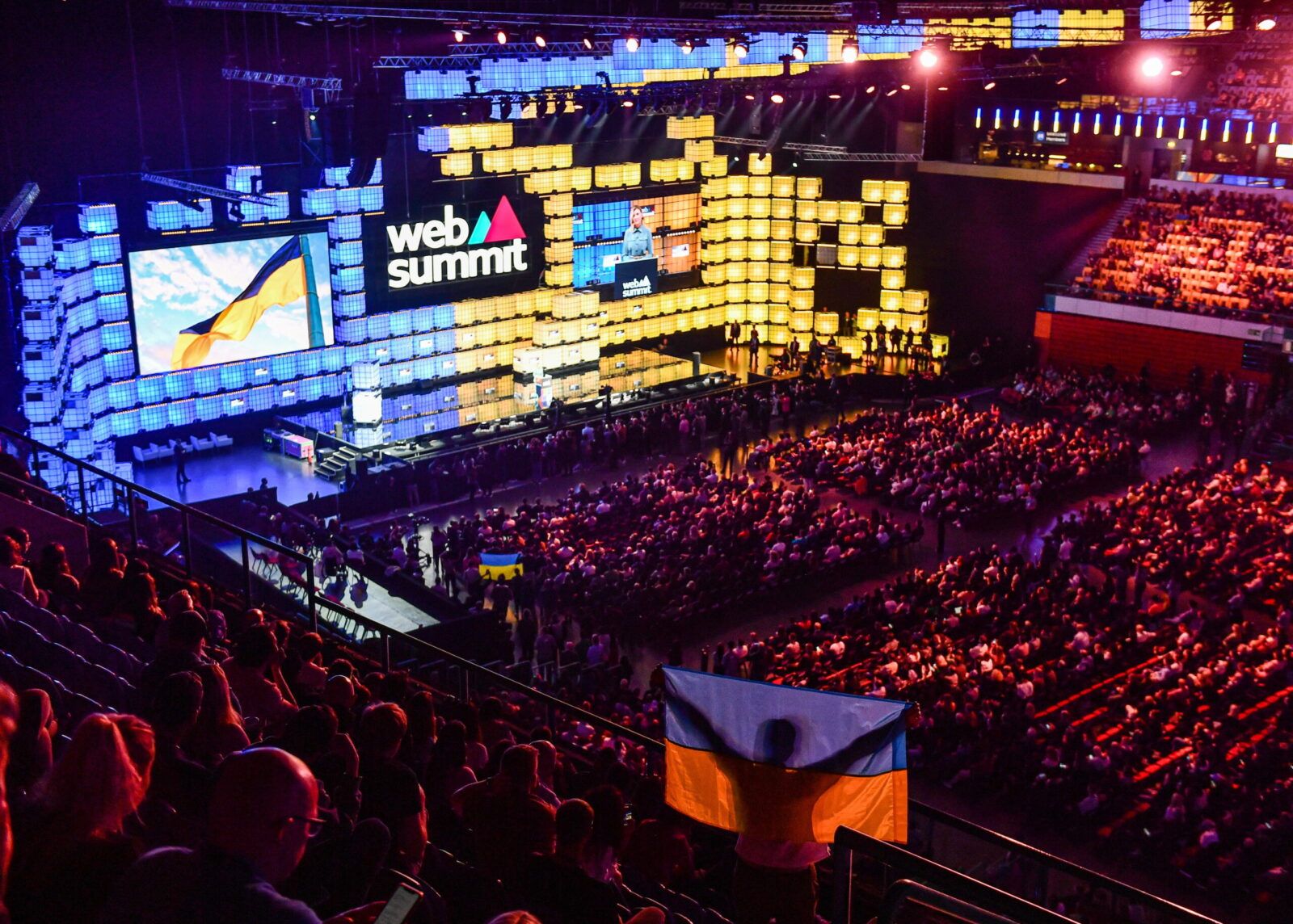The conflict in Ukraine serves as a crucial reminder of the significance of prioritising investments in national defence capabilities and resilience. This article argues that civilian and private actors can provide valuable support to strengthening national resistance capabilities.
The situation highlights the critical role of robust national defence capabilities and the value of support from allied nations. Whilst debates on strengthening national defence and supporting allies often focus on military resources, Ukraine’s national resistance against Russia highlights the importance of considering the role played by civilian and private actors. Shortly after Russian forces invaded Ukraine in February 2022, Ukrainian civilians were in the streets partaking in resistance efforts. They created makeshift roadblocks, removed and altered road signs, and produced Molotov cocktails. Parallel to these local efforts, there has been engagement by civilians and private companies abroad. Microsoft were swift to advice the Ukrainian government on cybersecurity, Elon Musk's SpaceX delivered 5,000 Starlink terminals to Ukraine and a Lithuanian journalist secured almost 6 million euros for purchasing a Bayraktar TB2 drone through a crowdfunding campaign.[1] However, in the public debate on the implications of the war for national defence capabilities, there is a tendency to focus on military contributions and resources, which are easier to map and measure. Removing road signs or producing Molotov cocktails may not be the efforts that tip the balance and secure Ukraine's victory. Yet, it is important to consider the efforts by civilian and private actors as they demonstrate a willingness to engage in coordinated action and provide spontaneous, innovative and low-threshold contributions to bolster national resistance.
To support this argument, the article identifies five recurring themes that have emerged from the broad spectrum of actors supporting the Ukrainian national resistance. First, a large part of the support builds on initiatives that were established in 2014, showing that pre-existing networks matter. Second, the Ukrainian IT and entrepreneurial communities are notably present in supporting national resistance efforts. Third, digital platforms have lowered the threshold for civilian and private actors who wish to support the Ukrainian national resistance. Fourth, whilst some initiatives are specific to the Ukrainian context, others can more easily adapt to other conflicts, and it is worth considering what other market opportunities they may pursue when the war in Ukraine is over. Finally, the current war in Ukraine illustrates how there can be strong synergies between the military, civil society and the private sector. The civilian engagement takes largely place through informal and undirected channels and is spontaneous in nature. For Norway, the war in Ukraine present important considerations of how such support from civilian and private actors can strengthen future Norwegian defence capabilities. A comprehensive whole of society approach will need to consider the informal and undirected channels through which support of national resistance may take place. The remainder of this article will examine each of these themes.
A substantial number of civilian and private engagement in Ukraine in 2022 built on existing initiatives and networks. The persistence of a possible new Russian intervention meant that many of the initiatives and organisations which emerged in response to the Russian annexation of Crimea and intervention in Eastern Ukraine in 2014, continued their activities. Unsuccessful attempts were made to stop the fighting, including the signing of the Minsk Agreements, but fighting in Eastern Ukraine never ended completely. When Russia commenced its full-scale invasion in February 2022, the pre-existing networks and groups contributed to an efficient mobilisation of volunteers. One of these volunteer groups was the Aerorozvidka, a drone operating group who started out as a crowdfunding initiative in 2014. Today, they are assisting the Ukrainian special forces at the frontline.[2] Two other volunteer initiatives stemming from 2014 is the Ukrainian NGO, Army SOS, founded by Euromaidan protesters and the software system GIS Arta created by a group of entrepreneurs. Army SOS provides technological support related to antenna systems, signals intelligence and solar power platforms. In addition, the NGO has developed a defence mapping software to strengthen the orientation of Ukrainian forces.[3] Similarly, GIS Arta provides a software which combines information from drones and intelligence feeds with information from observers on the ground to provide precise coordinates for Ukrainian artillery. The system is nicknamed “Ukraine’s Uber for artillery” because it is based on Uber software.[4] Aerorozvidka, Army SOS and GIS Arta are three of many examples of the initiatives established in 2014 that continued to support the Ukrainian Armed Forces in 2022.
Ukrainian resistance efforts have benefitted from a well-established and entrepreneurial IT community, reflecting the central role IT services played in Ukrainian export prior to the war. Defence and resistance against a military invasion require the ability to protect the digital infrastructure, and tech companies and the IT community are valuable contributors of knowledge. Large tech companies have contributed with advice and services. Microsoft has been an important cybersecurity advisor for the Ukrainian government.[5] Google expanded the eligibility of its Project Shield, helping the Ukrainian government and embassies to stay online in response to Russian cyber-attacks.[6] Whilst Primer.ai modified its AI enabled voice transcription and translation service, enabling Ukrainian forces to detect key information in Russian communication.[7] However, support in the digital domain is also coming from actors within Ukraine’s own IT community. One example is the IT Army of Ukraine which was created in February 2022, by the well-known IT entrepreneur and founder of several tech companies, Yegor Aushev.[8] Cooperating with the Ukrainian Ministry of Digital Transformation, its members are diverse, ranging from IT experts and former military personnel to social media influencers. The goal of the IT army is two-fold as it seeks to mobilise and coordinate the global IT community in distributed denial of services (DDoS) attacks, as well as develop more complex cyber operations against Russia. Furthermore, the IT Army recruits and coordinates its members through Telegram and shares guidelines for participation in a shared Google Docs. This shows how low threshold means of communication and coordination can be central in organising support for national resistance.
Digital platforms also lower the threshold for civilian and private actors who wish to support the Ukrainian national resistance efforts. Telegram and Twitter are used by both government and civilians to communicate and coordinate efforts, as seen in the example of the IT Army. Crowdfunding platforms appear to be a recurring channel for funding civilian and private initiatives. Technological advances make the reach of campaigns more independent of geographic location and social network. Crowdfunding has become an inclusive way for participation in national defence by allowing citizens who are not apt for serving in the military to contribute. However, the guidelines and regulations on fundraising initiatives differ between the different platforms. Spleis.no, Norway’s largest crowdfunding platform, received national media attention in July 2022, when it decided to close a funding initiative for the purchase of a Bayraktar drone. The crowdfunding initiators could not provide evidence that the drone would not be used for attack purposes, and thus did not adhere to the platform’s crowdfunding regulations.[9] Similar guidelines have also been established by the American crowdfunding platform, Gofundme.com, in order to ensure that fundraising initiatives are not intended for warfare.[10]Whilst some platforms are trying to regulate the funding initiatives, alternative platforms emerge, where anyone can financially contribute to warfare in an undisclosed manner. The platforms, KOLO (koloua.com) and Signmyrocket.com were created in 2022 by Ukrainians to purchase military equipment specifically, including weapons and armed drones, for the armed forces. Both platforms seek to incentivise donations by offering donors to have their name or messages inscribed on the artillery used in the attacks on Russian forces.
As private actors develop initiatives and offer their services to support the national resistance movement in Ukraine, it is relevant to reflect on what will happen to these companies when the war in Ukraine is over. Crowdfunding platforms are for instance highly adaptable and do not require many resources to shift their focus from Ukraine to another context. Their reach is further enhanced through social media platforms. Considering the current global security environment, market opportunities elsewhere are likely to arise. Whilst some initiatives are more bound to the Ukrainian context, others may pursue these market opportunities and adapt their services to other conflicts.
Civilian and private actor support to the Ukrainian national resistance efforts in Ukraine has often been informal, spontaneous and undirected. Some aspects of the support are specific to the Ukrainian context. However, small states like Norway should consider how civilian and private initiatives can have complementary value to the formal Norwegian military defence. In Ukraine, civil society has shown a solid willingness to initiate bottom-up activities to strengthen the resilience of the defence forces. This reflects the term “toloka”, an old Ukrainian, Russian and Baltic word which refers to spontaneous community projects that build on a sense of solidarity. The term can be compared to the Norwegian word “dugnad”. A first consideration for Norwegian defence planning is the possibility to integrate bottom-up initiatives and leverage on a “dugnadsånd”, as seen with the vaccination and infection prevention during the Covid pandemic. A second consideration is the central role which pre-existing networks and affiliations have played in the war in Ukraine. Although the spontaneity and informality of efforts are important, it should be possible to plan for their contribution. For example, by mapping the competencies that currently exist in the Norwegian civil society and private sector. Overall, civilian and private initiatives are likely to be a feature of future conflicts in one form or another. It is therefore important to consider integrating these initiatives into long-term defence planning, to strengthen the Norwegian defence capabilities.
References
[1]https://www.reuters.com/world/europe/lithuania-transfer-crowdfunded-bayraktar-drone-ukraine-wednesday-2022-07-06/
[4] https://themoloch.com/conflict/uber-for-artillery-what-is-ukraines-gis-arta-system/
[5]https://blogs.microsoft.com/on-the-issues/2022/02/28/ukraine-russia-digital-war-cyberattacks/?preview_id=65075 ; https://americaninnovators.com/news/how-tech-is-supporting-ukraine/
[6] https://cloud.google.com/blog/products/identity-security/how-google-cloud-is-helping-those-affected-by-war-in-ukraine
[7] https://primer.ai/news/wired-as-russia-plots-its-next-move-an-ai-listens-to-the-chatter/
[8] Soesanto, S. (2022) ‘The IT Army of Ukraine: Structure, Tasking, and Eco-System’, p. 32 p. Available at: https://doi.org/10.3929/ETHZ-B-000552293.
[9] https://www.spleis.no/vilkar
[10] https://www.gofundme.com/en-au/c/blog/how-to-help-ukraine-on-gofundme




